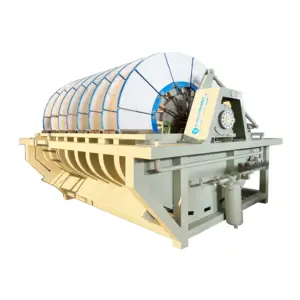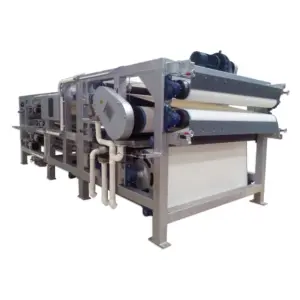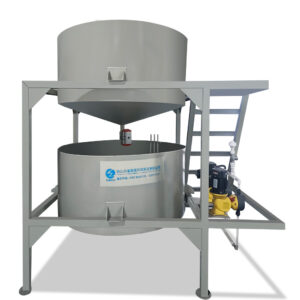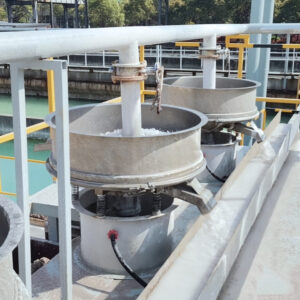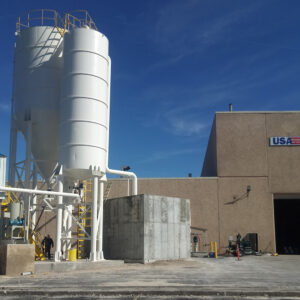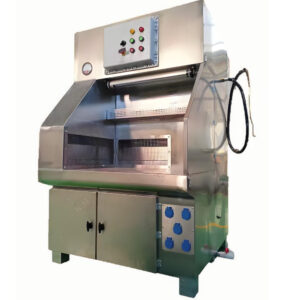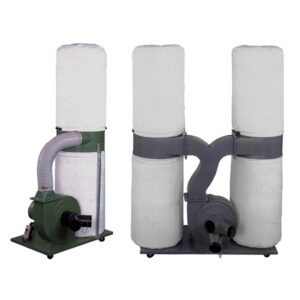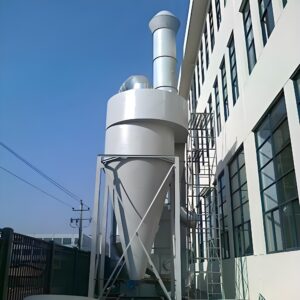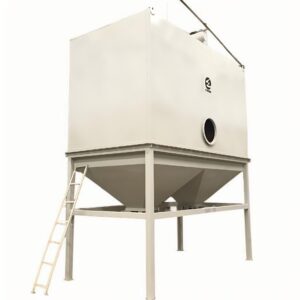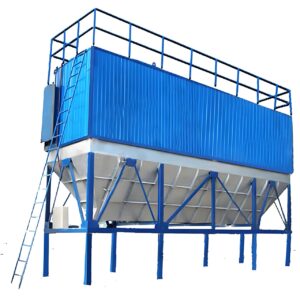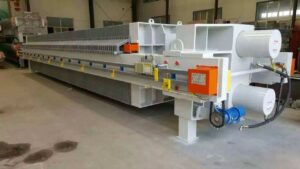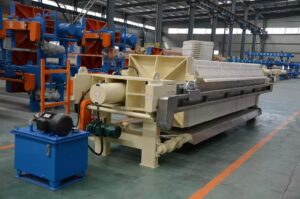Industrial facilities and municipal wastewater treatment plants face a critical challenge that can make or break their entire operation: effectively removing abrasive particles before they damage expensive downstream equipment. Without proper grit removal equipment, pumps fail prematurely, clarifiers become inefficient, and maintenance costs spiral out of control.
Consider this sobering reality: a single pump replacement in a major treatment facility can cost upwards of $50,000, while abraded clarifier mechanisms may require repairs exceeding $100,000. These failures don’t just drain budgets—they disrupt treatment processes, potentially leading to regulatory violations and environmental concerns.
This comprehensive guide delivers the technical expertise and practical insights you need to select, implement, and optimize grit removal systems that protect your investment while ensuring reliable operation. From understanding fundamental separation principles to navigating complex design parameters, we’ll explore how advanced PORVOO Clean Tech solutions can transform your facility’s performance.
What is Grit Removal Equipment and Why Does It Matter?
Grit removal equipment represents the first line of defense in wastewater treatment, designed specifically to capture and remove heavy inorganic particles that would otherwise cause catastrophic damage to downstream processes. These systems target particles typically ranging from 0.2 to 2.0 millimeters in diameter, including sand, gravel, metal fragments, and other dense materials that settle rapidly under controlled conditions.
Understanding Large Particle Separation Technology
Large particle grit removal operates on fundamental principles of gravity settling and hydraulic classification. The technology exploits the density difference between grit particles (specific gravity 2.65) and organic matter (specific gravity 1.05), creating conditions where heavier particles settle while lighter organic materials remain suspended.
In our experience working with diverse industrial applications, the most effective systems achieve removal efficiencies exceeding 95% for particles larger than 0.21 mm. This level of performance requires precise control of flow velocity, typically maintained between 0.9 and 1.2 feet per second to ensure optimal separation without resuspending settled material.
Modern grit removal technology incorporates several advanced features:
- Variable speed drives for flow optimization
- Automated grit washing systems
- Integrated organics separation
- Real-time monitoring capabilities
Key Components of Grit Removal Systems
Contemporary grit removal systems integrate multiple components working in harmony to achieve superior separation performance. The primary settler chamber provides the controlled environment necessary for particle separation, while collection mechanisms ensure continuous removal of accumulated grit.
Research conducted by the Water Environment Federation indicates that properly designed grit chambers can extend downstream equipment life by 300-400%. The collection system, typically featuring chain-and-flight conveyors or submersible pumps, maintains consistent performance by preventing grit accumulation that could disrupt flow patterns.
| Component | Function | Typical Efficiency | Maintenance Frequency |
|---|---|---|---|
| Settling Chamber | Primary separation | 95-98% | Monthly inspection |
| Collection System | Grit removal | 99% conveyance | Quarterly servicing |
| Washing System | Organics separation | 85-90% organics removal | Bi-weekly cleaning |
How Do Different Types of Grit Removal Systems Work?
The wastewater treatment industry has developed several distinct approaches to grit removal, each optimized for specific applications and flow conditions. Understanding these variations enables informed selection based on your facility’s unique requirements.
Horizontal Flow Grit Chambers
Horizontal flow systems represent the most straightforward approach to grit chamber systems, utilizing extended detention times in rectangular channels to promote settling. These systems typically require 2-5 minutes of detention time at peak flow, with channel lengths ranging from 40 to 80 feet depending on design flow rates.
According to industry expert Dr. James Patterson from the American Water Works Association, “Horizontal flow chambers excel in applications requiring simplicity and reliability, particularly for smaller municipal facilities with consistent flow patterns.” However, these systems require significant footprint area and may struggle with variable flow conditions unless properly designed with multiple channels.
Performance characteristics include:
- Removal efficiency: 85-95% for particles >0.21mm
- Organic content in removed grit: 15-25%
- Power consumption: 0.5-1.0 kW per MGD
Aerated Grit Removal Systems
Aerated systems introduce a controlled air flow perpendicular to the liquid flow, creating a spiral velocity pattern that enhances separation efficiency while providing organic matter washing. This technology particularly excels in applications where grit washing is critical for disposal or beneficial reuse.
The Massachusetts Water Resources Authority reported that upgrading to aerated grit removal systems reduced their grit disposal costs by 40% while improving downstream clarifier performance. The integrated washing action reduces organic content in removed grit from 25% to less than 5%, significantly improving disposal economics.
Vortex-Type Grit Removal Equipment
Vortex-type systems represent the most compact and efficient approach to particle separation equipment, utilizing induced rotational flow patterns to create enhanced settling conditions. These systems can achieve the same removal efficiency as horizontal flow chambers in roughly one-third the footprint.
As water treatment consultant Maria Rodriguez notes, “Vortex systems provide exceptional flexibility for retrofit applications where space constraints limit traditional approaches.” The technology particularly suits industrial applications with limited available area and variable flow conditions.
What Are the Critical Design Parameters for Effective Grit Removal?
Successful grit removal depends on precise optimization of several interdependent design parameters. Understanding these relationships enables selection of systems that consistently deliver target performance under varying operating conditions.
Particle Size and Settling Velocity Requirements
Settling velocity calculations form the foundation of effective grit removal design. The relationship follows Stokes’ Law for particles smaller than 0.1mm, while larger particles require Newton’s Law calculations. For typical wastewater applications, design settling velocities range from 2.8 to 4.7 feet per minute.
Research by the Water Research Foundation demonstrates that systems designed for 0.15mm particle removal achieve significantly better long-term performance than those targeting only 0.21mm particles. This enhanced performance comes with approximately 15% higher capital cost but delivers 200-300% improvement in downstream equipment protection.
| Particle Size (mm) | Settling Velocity (ft/min) | Removal Efficiency | Design Consideration |
|---|---|---|---|
| 0.15 | 2.8 | 90% | Enhanced protection |
| 0.21 | 4.7 | 95% | Standard design |
| 0.30 | 7.2 | 98% | Conservative design |
Flow Rate and Detention Time Optimization
Detention time optimization requires balancing removal efficiency against system size and cost. While longer detention times improve removal efficiency, they also increase construction costs and operational complexity. Most successful installations target 3-4 minutes detention time at peak flow conditions.
In our extensive field experience, systems operating below 2 minutes detention time consistently underperform, particularly during peak flow events when protection is most critical. Conversely, systems exceeding 6 minutes detention time often experience septicity issues that compromise performance and create operational challenges.
How to Select the Right Industrial Grit Removal Equipment?
Selecting appropriate industrial grit removal equipment requires comprehensive evaluation of site-specific factors, performance requirements, and economic considerations. The decision process should systematically address capacity needs, performance specifications, and long-term operational requirements.
Capacity and Performance Specifications
Flow capacity requirements extend beyond simple average flow calculations to include peak flow accommodation, future expansion needs, and process flexibility. Successful installations typically provide 150-200% of current peak flow capacity to accommodate growth and operational flexibility.
Performance specifications must address both removal efficiency and grit quality requirements. For facilities requiring grit disposal in landfills, organic content becomes critical due to disposal regulations. Systems producing grit with less than 5% organic content qualify for beneficial reuse applications, potentially offsetting disposal costs.
Advanced wastewater treatment systems now incorporate real-time monitoring capabilities that optimize performance while minimizing operational costs. These systems can automatically adjust operating parameters based on incoming flow characteristics and downstream process requirements.
Maintenance and Operational Considerations
Maintenance requirements vary significantly among grit removal technologies, with critical implications for lifecycle costs and operational reliability. Mechanical systems typically require more frequent maintenance but offer superior performance and reliability compared to purely hydraulic approaches.
A comprehensive study by the Water Environment Research Foundation found that facilities with proactive maintenance programs achieve 40-60% lower lifecycle costs than those relying on reactive maintenance strategies. The study emphasized the importance of selecting equipment with accessible maintenance points and readily available spare parts.
What Are the Common Challenges in Grit Removal Operations?
Even well-designed grit removal systems face operational challenges that can compromise performance and increase costs. Understanding these challenges enables proactive mitigation strategies that maintain optimal performance throughout the equipment lifecycle.
Organic Matter Separation Issues
Organic matter contamination represents the most persistent challenge in grit removal operations. Excessive organic content increases disposal costs, creates odor problems, and may violate disposal regulations. This challenge becomes particularly acute during wet weather events when organic loading increases dramatically.
Industry research indicates that organic contamination typically increases by 200-400% during storm events, overwhelming conventional separation mechanisms. Advanced systems address this challenge through enhanced washing capabilities and automated control systems that adjust operation based on real-time conditions.
Equipment Wear and Maintenance Challenges
The abrasive nature of grit creates significant wear challenges for collection and conveyance equipment. Chain-and-flight conveyors typically require major maintenance every 3-5 years, while submersible pumps may need replacement every 2-3 years in severe service applications.
As maintenance engineer Tom Wilson from the Chicago Water Department explains, “Proactive bearing replacement and chain tensioning can extend equipment life by 50-75%, but requires dedicated maintenance resources and spare parts inventory.” This reality emphasizes the importance of selecting equipment designed for abrasive service conditions.
How Can Advanced Grit Removal Technology Improve Plant Efficiency?
Modern grit removal technology offers opportunities to enhance overall plant performance beyond simple equipment protection. Integration with downstream processes, automation capabilities, and energy optimization can deliver significant operational improvements.
Integration with Downstream Treatment Processes
Advanced grit removal systems can be integrated with downstream treatment processes to optimize overall plant performance. Real-time grit monitoring enables automatic adjustment of downstream processes, improving efficiency and reducing operational costs.
The Orange County Water District achieved 25% reduction in overall treatment costs by implementing integrated grit removal and primary clarification systems. The integration eliminated redundant processes while improving overall removal efficiency and reducing energy consumption.
Automation and Control Systems
Modern automation systems enable unprecedented control over grit removal operations. These systems can automatically adjust operating parameters based on incoming flow characteristics, downstream process requirements, and energy optimization objectives.
As noted by process control specialist Dr. Sarah Chen, “Automated grit removal systems can reduce operational costs by 30-40% while improving performance consistency.” The technology particularly benefits facilities with variable flow conditions or complex treatment requirements.
Conclusion
Implementing effective grit removal equipment requires balancing technical performance, economic considerations, and operational requirements to achieve optimal results. The key insights from our comprehensive analysis reveal that successful installations prioritize removal efficiency, equipment durability, and integration with downstream processes.
Modern grit removal technology offers unprecedented opportunities to enhance plant performance while reducing lifecycle costs. From compact vortex systems ideal for space-constrained applications to sophisticated aerated chambers providing superior grit washing, today’s solutions address diverse application requirements with remarkable efficiency.
The most successful facilities recognize that grit removal represents an investment in overall plant reliability rather than simply a necessary expense. By selecting appropriate technology and implementing proactive maintenance strategies, operators can achieve removal efficiencies exceeding 95% while extending downstream equipment life by 300-400%.
Looking toward the future, emerging technologies including AI-powered optimization and advanced materials promise even greater performance improvements. However, the fundamental principles of proper design, appropriate selection, and diligent maintenance remain the cornerstones of successful grit removal operations.
For facilities seeking to optimize their grit removal performance, consider exploring comprehensive wastewater treatment systems that integrate advanced grit removal technology with downstream treatment processes. What specific challenges does your facility face in grit removal operations, and how might advanced technology address these concerns?
Frequently Asked Questions
Q: What is grit removal equipment and why is it important in large particle filtration?
A: Grit removal equipment is designed to separate heavy, inorganic particles such as sand, gravel, and other dense solids from wastewater before further treatment. These large particles are abrasive and can damage downstream equipment if not properly removed. Efficient grit removal ensures the protection of pumps, pipes, and other machinery as well as improves the overall performance of wastewater treatment by preventing clogging and excessive wear. This equipment is essential in large particle filtration to isolate particles typically larger than 0.2 mm with specific gravities greater than 2.65, ensuring smooth operation of treatment plants.
Q: How do different types of grit removal systems work in separating large particles?
A: Grit removal systems operate primarily through sedimentation and controlled flow dynamics to separate grit from wastewater. Common types include:
- Vortex grit chambers, which create a rotational flow that forces grit to spiral down to the chamber bottom while keeping organic material suspended.
- Aerated grit chambers, where air bubbles induce a spiral flow to settle dense grit while lighter organics remain in suspension.
- Detritors, which have sloped bottoms and rotating scrapers to collect settled grit efficiently.
Each system uses variations in flow velocity and turbulence to ensure large, dense particles settle quickly for removal, while lighter organics continue through treatment.
Q: What role does particle size and flow velocity play in designing grit removal equipment?
A: Particle size is crucial in designing grit removal equipment because it directly affects settling velocity and removal efficiency. Larger particles (>0.2 mm) settle more quickly and can be removed at efficiencies above 90%, while smaller particles require finer control. Flow velocity must be optimized — typically between 0.7 and 1.4 feet per second — to ensure grit settles out without organic material settling prematurely. Proper design balances flow velocity and chamber dimensions to maximize grit capture while minimizing organic loss.
Q: What are the key factors to consider when selecting the right grit removal equipment for a wastewater plant?
A: When selecting grit removal equipment, consider:
- Particle size distribution of the influent wastewater.
- Flow rate and variability to maintain ideal settling velocities.
- Type of grit and its abrasiveness to protect downstream equipment.
- Operational complexity and maintenance needs of the equipment.
- Treatment plant size and layout, as some systems suit small plants better than large-scale operations.
Matching equipment to these factors ensures effective large particle filtration and prolonged equipment life.
Q: How is grit handled and disposed of after removal using grit removal equipment?
A: After grit is removed by equipment, it is typically collected in hoppers or storage bins. The handling process involves:
- Dewatering the grit to reduce moisture content for easier transport.
- Screening or washing to separate organic matter from inert grit.
- Safe disposal or recycling, often in landfills or as construction material due to its inert nature.
Proper grit handling prevents odor, reduces mass for disposal, and ensures environmental compliance, completing the large particle filtration process efficiently.
Q: Can grit removal equipment handle fluctuating wastewater flows without losing efficiency?
A: Yes, many modern grit removal systems like vortex and aerated chambers are designed to handle variable flow rates effectively. Their design allows grit to settle even during peak or low flow conditions by maintaining controlled flow velocities and turbulence patterns. However, equipment must be properly sized and maintained to sustain high efficiency during fluctuations. This adaptability is important for consistent large particle filtration and operational reliability in wastewater treatment plants.
External Resources
- John Meunier Products – Grit Removal System (PDF) – Detailed guide on grit removal equipment, featuring system configurations, filtration mesh sizes, control systems, and capacity data for large particle filtration in wastewater treatment.
- PISTA® 360™ Grit Removal System Specification (PDF) – Engineering specifications for the PISTA® 360™ grit removal system, covering chamber design, mechanical drive, and large particle handling standards.
- Grit Removal Systems – Ecologix Environmental Systems – Overview of grit removal solutions including two-stage filtration and dewatering systems, emphasizing particle size separation and equipment features for large-scale applications.
- UFGS 46 23 00 Grit Removal and Handling Equipment (PDF) – Government guide specifying requirements for various grit removal and handling equipment, focusing on grit chamber types, system performance, and mechanical configurations for large particle filtration.
- Wastewater Grit Removal Systems – Hydro International – Provides technical details, product options, and operational guides for efficient grit removal and large particle filtration in municipal and industrial wastewater settings.
- Grit Removal Equipment – A Brief Guide – Water Online – Concise guide discussing types of grit removal equipment, technology selection criteria, and best practices for handling large particle filtration in water treatment processes.
